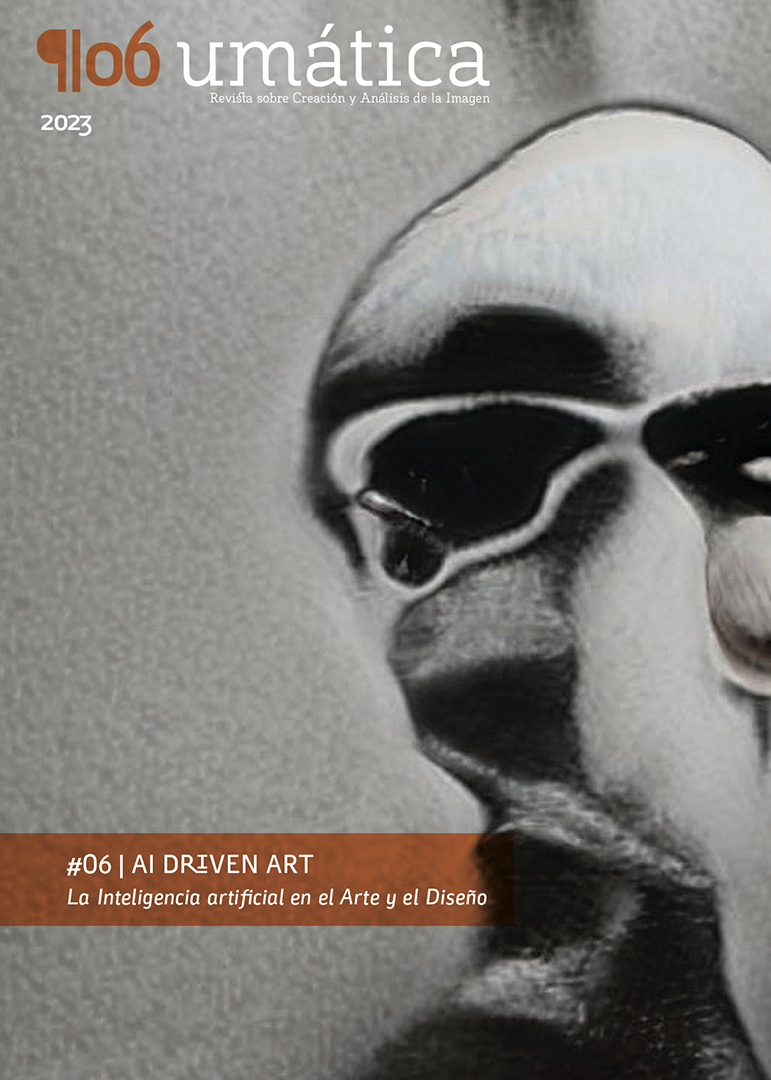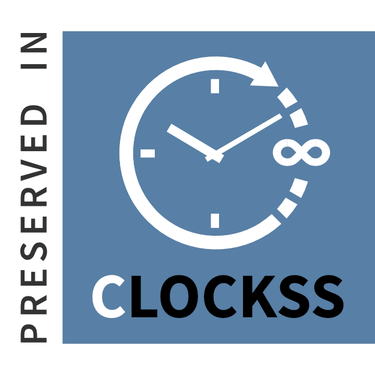Public sculpture as a mechanism for representation and identification of the local community
DOI:
https://doi.org/10.24310/umatica.2023.v5i6.17821Keywords:
Public Sculpture, Public Space, Context, Community, Participatory ArtAbstract
This text addresses a series of recent public sculptures by the artistic collective Llobet y Pons, made taking into account various specific considerations of the context in which they are installed. These works incorporate a participatory functionality that aims to respond to the demands of the local community, with the purpose of promoting identification with the sculptures. Through relational objects of a public nature, Llobet & Pons create meeting places that encourage community interaction with each other and with art. Sometimes this is achieved through sport, as in the play No one wins. Multibasket (Pingsha Island) (2022), incorporating a new community basketball court; or through the cultural program designed jointly with neighborhood entities and offered around a series of mini-buildings in Kiezplatten (2021). Llobet & Pons also explore the incorporation of an infrastructure for practical use in the place, as in the work Population Pyramid Grill Station (2019), which includes a public barbecue. In In another’s skin (2018) they demonstrate that another effective identification strategy consists of the creation of sculptures that incorporate a personal meaning for the audience, establishing a personal and non-transferable link between participant and sculpture.
Downloads
Metrics
Publication Facts
Reviewer profiles N/A
Author statements
Indexed in
-
—
- Academic society
- N/A
- Publisher
- Universidad de Málaga (España)
References
Ardenne, P. (2006). Un arte contextual. Creación artística en medio urbano, en situación, de intervención, de participación. Cendeac.
Bishop, C. (2012). Artificial Hells: Participatory Art and the Politics of Spectatorship. Verso.
Blanco, P. (2001). Explorando el terreno. En P. Blanco, J. Carrillo, J. Claramonte, & M. Expósito (Eds.), Modos de hacer. Arte crítico, esfera pública y acción directa. Ediciones Universidad de Salamanca.
Bourriaud, N. (2006). Estética relacional. Adriana Hidalgo.
Felshin, N. (Ed.). (1995). But is it art?: The spirit of art as activism. Bay Press.
Fernández Pons, L. (2022). Juego, comunidad y contexto. Escultura pública con un uso social lúdico .(Tesis doctoral). Universidad de Barcelona. https://diposit.ub.edu/dspace/bitstream/2445/194041/1/LFP_TESIS.pdf
Fernández Pons, L., & Llobet Sarria, J. (2022). Kiezplatten: Una escultura participativa en el espacio público ante el reto de la pandemia. En R. Parramon, E. Agustí, & E. Puig (Eds.), Arte y espacio social en tiempos de control, descontrol y aislamiento (pp. 70-71). Idensitat. http://www.ub.edu/imarte/nouwp4812017/wp-content/uploads/2022/11/art_espai_social_opt.pdf
Guilbaut, S. (2007). ¿El Guggenheim como un nuevo Edsel cultural? En A. M. Guasch & J. Zulaika (Eds.), Aprendiendo del Guggenheim Bilbao (pp. 137-152). Akal Ediciones.
Jacob, M. J. (1995). Outside the Loop. En M. Jane. Jacob, Michael. Brenson, E. M. Olson, & Sculpture Chicago (Organization) (Eds.), Culture in action: A public art program of Sculpture Chicago (pp. 50-61). Bay Press.
Kwon, M. (2002). One place after another: Site-specific art and locational identity. The MIT Press.
Lacy, S. (Ed.). (1995). Mapping the Terrain—New Genre Public Art. Bay Press.
Lippard, L. (1997). The lure of the local: Senses of place in a multicentered society. New Press.
Lippard, L. (2001). Mirando alrededor: Dónde estamos y dónde podríamos estar. En P. Blanco, J. Carrillo, J. Claramonte, & M. Expósito (Eds.), Modos de hacer. Arte crítico, esfera pública y acción directa (pp. 51-71). Ediciones Universidad de Salamanca.
Downloads
Published
How to Cite
Issue
Section
License
Copyright (c) 2023 Luis Fernández Pons, Jasmina Llobet Sarria

This work is licensed under a Creative Commons Attribution-NonCommercial-ShareAlike 4.0 International License.
All contens publishes in Umática.Revista sobre Creación y Anáisis de la Imágen are protected under the Creative Commos Attribution-NonComercial-ShareAlike 4.0 International (CC-BY-NC-SA 4.0) license.
All about this license is available in the following link: <http://creativecommons.org/licenses/by-nc-sa/4.0>
Users can copy, use, redistribute, share and exhibit publicly as long as:
- The original source and authorship of the material are cited (Journal, Publisher and URL of the work).
- It is not used for comercial purposes.
- The existence of the license and its especifications are mentioned.
There are two sets of authors’ rights: moral and property rights. Moral rights are perpetual prerogatives, unrenounceable, not-transferable, unalienable, imprescriptible and inembargable. According to authors’ rights legislation, Umática.Revista sobre Creación y Anáisis de la Imágen recognizes and respects authors moral rights, as well as the ownership of property rights, which will be transferred to University of Malaga in open access. The property rights are referred to the benefits that are gained by the use or the dissemination of works. Fotocinema. Umática.Revista sobre Creación y Anáisis de la Imágen is published in an open access form and it is exclusively licenced by any means for doing or authorising distribution, dissemination, reproduction, , adaptation, translation or arrangement of works.
Authors are responsable for obtaining the necessary permission to use copyrighted images.
Copyright note: Authors who have publications with this journal agree and certify to the following terms:
- That he/she has contributed directly to the intellectual content of the work, for which he/she is responsible for all purposes.
- That he/she approves the contents of the manuscript submitted to the editorial process of UMÁTICA, REVISTA SOBRE CREACIÓN Y ANÁLISIS DE LA IMAGEN, and therefore agrees that his/her name appears as the author(s).
- That the content of the article has not been published and that it does not appear in any other work that is about to be published.
- That he/she agrees not to submit it for consideration of another publication while it is in the process of being reviewed by UMÁTICA, REVISTA SOBRE CREACIÓN Y ANÁLISIS DE LA IMAGEN, nor later in case it is accepted for publication.
- That he/she has not had, nor does any personal or financial affiliations that could prejudice the development or results of the present work.
- That all those persons who have made a substantial contribution to the development of the work, having given their permission for the mention, have been mentioned in the acknowledgments section.
- That he/she agrees to provide, when required by the journal, access to all the data and sources on which the work presented is based.
- That he/she will actively participate in the realization of all those stylistic or orthographic-typographic modifications necessary for the publication of the work when notified by the journal's editorial team.
- That he/she has not violated, and nor will, the laws and human or animal rights during the process of research and publication of this work.
- That, none of the institutions in which he/she carries out his/her scientific and research work has presented objections to the publication of the manuscript submitted for evaluation.
- That data and references to materials published are credited and included in the references and citations and, in the cases required, have the due authorizations of those who own the patrimonial rights.
- That any material used is free of copyright. Author(s) is responsible for any litigation or claim related to intellectual property rights, exonerating UMÁTICA, REVISTA SOBRE CREACIÓN Y ANÁLISIS DE LA IMAGEN (UMÁTICA, CREATION AND ANALYSIS OF IMAGE JOURNAL) of any responsibility.
- That in case the work is approved for publication, authorizes the publisher to include the text in the journal UMÁTICA, REVISTA SOBRE CREACIÓN Y ANÁLISIS DE LA IMAGEN and to reproduce, edit, distribute, exhibit and communicate it in the country and abroad by printed, electronic, CD, Internet or any other means known or to be known.







23.png)






